Features
To date, over 3.5 million people have died from Covid-19. Understanding its origins, with a view to preventing any future such pandemics, is therefore of global importance. Covid-19, known formally as SARS-CoV-2, is a coronavirus, and historically these have come to afflict humans through spill-over from wildlife sources. This was the case with the Middle East Respiratory Syndrome (MERS) outbreak in Jeddah, Saudi Arabia, in 2012, spilling-over from dromedary camels, killing 858 people; similarly the SARS-CoV epidemic (for which there is still no cure) that began in Guangdong in 2002 and killed 744 people, spilled-over from palm civets as an intermediary, transferring infection from cave-dwelling horseshoe bats.
We had been gathering data collected from across Wuhan’s wet markets…which put our team in the right place at the right time to document the wild animals sold in these markets in the lead up to the pandemic
Not surprisingly then, the finger of blame has been pointed at wildlife trade in the wet markets of Wuhan, Hubei, China, where this Covid-19 outbreak seems to have originated. Candidate species include bats, which are definitive hosts brewing coronaviruses, and both pangolins and palm civets as potential intermediaries; although the most recent genetic data suggest that the variant found in these latter species isn’t quite similar enough to the human variant to be a totally convincing source. Nevertheless, through 14th Jan to 10th Feb this year the World Health Organization (WHO) sent an investigative team to Wuhan, where part of their remit was to try to ascertain, post hoc, what animals were being sold in markets prior to closures. Their report was inconclusive, but drew attention to the particular need to monitor bat and pangolin trading.
Our investigation found that both bats and pangolins had an alibi – neither was there!
Working with our colleagues based at China West Normal University, Nanchong, and Hubei University of Traditional Chinese Medicine, Wuhan, Xiao Xiao and Zhao-Min Zhou on the ground in China, the WildCRU team had been gathering data collected from across Wuhan’s wet markets through May 2017 and November 2019. This research, begun before Covid-19 focused a spotlight on these markets, was actually motivated by a study of tick-borne (no human-to-human transmission) Severe Fever with Thrombocytopenia Syndrome, which put our team in the right place at the right time to document the wild animals sold in these markets in the lead up to the pandemic. Our investigation, published today in Nature-Scientific Reports, found that both bats and pangolins had an alibi – neither was there!
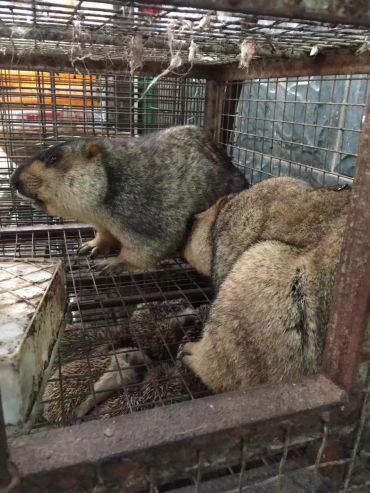 Caged marmots above a cage containing hedgehogs, Huanan seafood market prior to closure
Caged marmots above a cage containing hedgehogs, Huanan seafood market prior to closureWith these huge concentrations of diverse species under one roof, while we discovered no evidence supporting original spill-over from candidate bats or pangolins in Wuhan, it would seem but a matter of time before some other unwelcome disease might skip into the human population. Indeed it is estimated that around 70% of all diseases afflicting people originate in animals, think Avian Influenza, HIV, Ebola, etc.
Commendably, with this risk in mind, on the 26th of Jan 2020, China’s Ministries temporarily banned all wildlife trade as a precautionary step until the COVID-19 pandemic concludes. Subsequently, on 24th Feb 2020, they permanently banned eating and trading terrestrial wild (non-livestock) animals for food. These interventions, intended to protect human health, redress previous trading and enforcement inconsistencies, will have collateral benefits for global biodiversity conservation and animal welfare, and will hopefully prevent some future tragedies.
Professor David Macdonald is Director of WildCRU, part of the Department of Zoology, University of Oxford
Black female scientists have historically borne the brunt of both racial and gender biases in their fields, and in a white male dominated industry like the sciences, their achievements can at times go unsung.
These adverse circumstances make their victories all the more significant, and their contributions to the scientific community invaluable.
In celebration of Black History Month we are shining a light on some of the brilliant black minds of Oxford whose research is helping to improve the world today.
'I had never seen any prominent women of colour in zoology until I joined twitter'
Tanesha Allen, an African American Zoologist and behavioural ecologist at the Wildlife Research Conservation Unit (WildCRU), Oxford University, discusses her research studying the behaviours of European badgers, transatlantic culture shock and how and her experience as a black female scientist compares to others in her field.
Earlier this year Tanesha was awarded ‘Highly Commended’ at the Vice-Chancellor’s Public Engagement with Research Awards for her community outreach work, encouraging girls aged 11-14 to choose a career in science.
What is your research area?
I study olfactory communications in European badgers. That basically means understanding how these animals use scent to advertise themselves for mating opportunities. An animal’s scent can tell you a lot of information about them, from their age through to the group that they are from.
I started my DPhil at Oxford University in October 2016, and am I’m now in my fourth year of working with WildCRU and am part of the Wytham Woods Badger Project, which has been running since 1987.
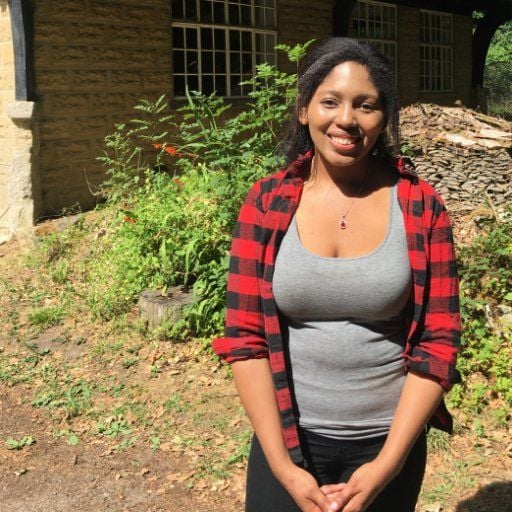 Tanesha Allen, is a Zoologist and behavioural ecologist at the Wildlife Research Conservation Unit (WildCRU), Oxford University. Image credit: WildCRU
Tanesha Allen, is a Zoologist and behavioural ecologist at the Wildlife Research Conservation Unit (WildCRU), Oxford University. Image credit: WildCRUWytham Woods has the highest population of badgers in the world – 250 total, including 200 adults and 50 cubs. Each season we spend two weeks live tracking the badgers, using a unique tattoo which they have on their inner thigh. We use this to gather information on their weight, body condition, teeth, wounds and scars etc., to see how they change over time. It helps us to understand their movements, and how these animals respond to the challenges that they face, such as changing habitats, and how we can best protect them. Understanding their movements and behaviours can also help us to prevent the spread of tuberculosis (TB).
What is a badger fact that people would be surprised to know?
Badgers are naturally promiscuous, and mate with everyone. Females have something called superfetation, which allows them to mate with, and have their embryos fertilised by multiple males.
What is a typical day in the life like for you?
There is no such thing as an average day for me. My daily routine changes from season to season. During one season I could be spending all day in the woods collecting samples, at another time I’ll be releasing badgers back to their sets, and at others, I spend all day in my office reading journal articles. Another big part of my work is public engagement, so I spend a lot of time in schools with children running workshops to try and engage them with wildlife and conservation.
You were recently awarded “Highly Commended” at the Vice-Chancellor’s Public Engagement with Research Awards for your citizen science project with local schools. Firstly congratulations! Secondly, what interests you most about working with young people?
I love working with students, and how open they are to learning.
Usually in outreach with adults they often already have preconceived ideas about what science is and what they believe should be done, or shouldn’t be done. But with students they don’t have any preconceived notions. Just an eager thirst for knowledge.
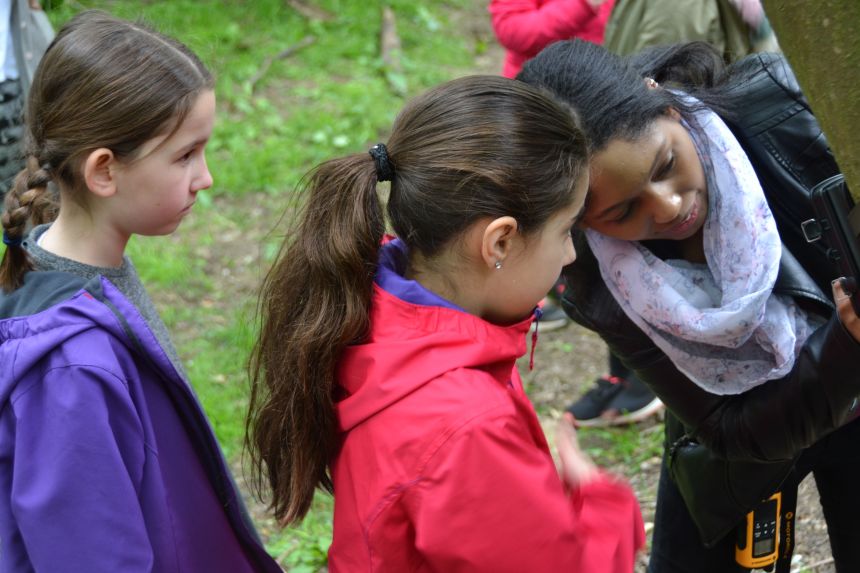 Tanesha works with the Abingdon Science Partnership and Science Oxford on a project encouraging girls aged between the ages of 11 and 14 to choose careers in science.
Tanesha works with the Abingdon Science Partnership and Science Oxford on a project encouraging girls aged between the ages of 11 and 14 to choose careers in science.Can you tell us about your project?
I work with the Abingdon Science Partnership and Science Oxford on a project encouraging girls aged between the ages of 11 and 14 to choose careers in STEM, especially physics. I volunteered initially, and over time have got more and more involved in science outreach and communications.
Our work is funded by the Royal Society Partnership Grant, and we work with local secondary and primary schools, teaching students how to use camera traps to monitor wildlife, analyse footage and also animal behaviour. The project has been running for just over a year.
I’m also teaching them how badgers react to scent from different species and have taken them out badger tracking. We have found nine badges and six cubs so far.
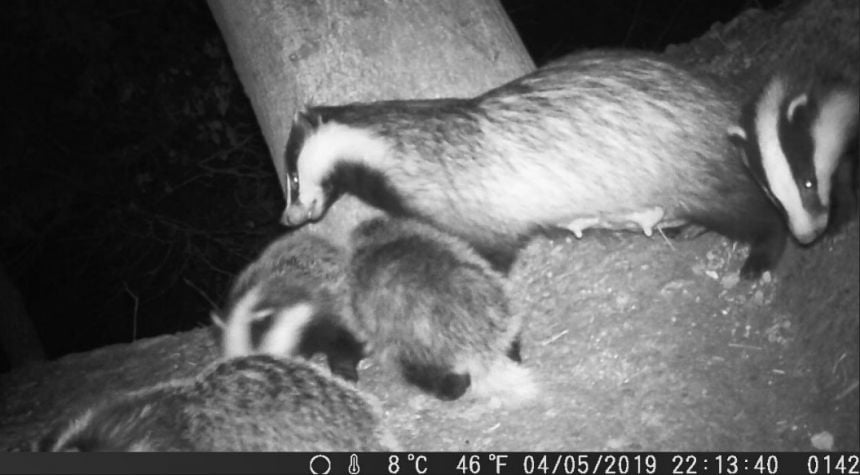 Image credit: Tanesha Allen
Image credit: Tanesha AllenTanesha's research focuses on factory communications in European badgers and understanding how they use scent to advertise themselves for mating opportunities.
Did anyone ever try to discourage you from pursuing a career in science?
The opposite actually, I never encountered any push-back, I was always an academic person who got good grades at school, so people were very encouraging to me.
I did encounter some challenges during my Undergraduate Degree at Washington State University. I think that was when I became more aware of social issues such as, racism and sexism and how they affect me. I went to a very diverse elementary school, and then moved to the suburbs, which were not as diverse, but I was definitely sheltered from some harsh realities like that.
Can you elaborate?
I became more aware of what it meant to be a black woman in society when I went to university.
When I started my degree I became more aware of what microaggressions were, and how people from marginalised groups are treated compared to more privileged groups.
I was one of two black women on an animal sciences course, surrounded by a lot of white students and professors, and I became aware of a number of microaggressions. There was always an assumption I was lazy or unmotivated. It was very hard and it really got to me.
Mostly because I had not encountered anything like that before in my life.
How did this experience affect you, and how did you learn to overcome it?
It was hard, and is something that I still wrestle with now. But I have learned to focus on what I bring to the table. I know my worth and the value of my research. I won’t allow someone to make me feel that way again – but it is not easy.
As a black female zoologist what does Black History Month mean to you?
In my opinion, Black History Month is an important time for everyone - regardless of their race - because, black history is a part of history. Period. Both in the US and UK, black people have had a huge impact on the development of these countries and certain social movements have influenced the trajectory of those countries, in ways that influence society at large, not just one group of people.
Black History Month is an opportunity to highlight the achievements that the black community has made in spite of the obstacles put in our way, while highlighting that more needs to be done – especially somewhere like Oxford.
On a personal level I enjoy hearing other people’s stories and connecting with others in the field. I had never seen any prominent women of colour in zoology until I joined twitter last year. But being active on social media has allowed me to connect with other women of colour in the field who share my passion for zoology, and to celebrate them more.
What is it like to work side by side a conservation icon like Professor David Macdonald?
It is amazing working with David. The year before I applied to Oxford University, Cecil the lion died and it was major news everywhere, including America, where I am from.
What gets you out of bed in the morning?
I enjoy mastering a puzzle, and putting the pieces together of figuring out how animals communicate with each other. What affects their interactions with each other, their environment and with us? I want to know how we can use their behaviour to help improve the environment.
Have you always had an interest in conservation and wildlife?
I was always interested in science as a child.
I was born and raised in Tacoma, Washington, USA, and remember going outside a lot, and spending time in my apartment complex. I loved playing with bugs and watching my neighbours dogs and birds. But, the only jobs I knew of that involved working with animals were being a vet or a zookeeper. I didn’t have much knowledge of other animal related jobs.
Animal behaviour in general has always fascinated me, particularly how similarities to humans and how they choose mates. A lot goes into that decision – who you have already mated with, who you are related to. Humans do the same thing.
How did you find moving from the US to the UK for your graduate studies and PhD work, was it hard to adjust to a new environment?
I’ve been in the UK since 2012, and the transition from my education in America, to here, has been interesting. The main thing for me was adjusting to cultural differences. Americans are more outgoing and forthright. I find it can be hard to know if you have offended a Brit, because they don’t often tell you directly.
Was your experience as a black women in science different in the UK to your American university?
There were good and bad elements to both experiences, and I have experienced discrimination in both countries in different ways.
What do you think needs to change to eliminate these behaviours?
We tend to talk a lot about sexism in STEM, but there is not a lot of talk about how different women from different types of backgrounds encounter different challenges in STEM. So there is not a lot of focus on intersectionality. I think one good step would be addressing unconscious bias. As scientists we are trained to be objective and logical. Often there are times we think we don’t have unconscious biases with social issues, or towards certain groups of people, but we do. I think having our unconscious biases addressed, and unlearning our own behaviours would be a good way to make things easier for the next generation of women and women of colour in
STEM.
 Image Credit: WildCRU
Image Credit: WildCRUTanesha and her team in Wytham Woods
During my second and third year at Oxford I was the postgraduate representative for the Oxford University Campaign for Racial Awareness and Equality, which allowed me to push forward ideas around conducting racial awareness workshops on a college and department level. Postgraduate students are more connected to their departments than their colleges so it is important to consider both areas.
Is there anything that you would change about the University?
There is a lot I would change about how marginalised, and under-represented groups are treated in Oxford.
There are definitely more initiatives in place that are helping to improve diversity, and encourage more people of ethnic minorities to apply, which is excellent. However, the next step is making sure people from these groups are included more within research grounds, colleges and wider projects.
It is one thing for institutions to be diverse, but if those people don’t feel like they are being properly valued, included and respected, these initiatives fall short.
What’s next for you when you finish at Oxford?
I am finishing my thesis and will complete my PhD next summer. I am not sure what comes next, but I hope to continue my science outreach work with children, and would love to stay in the UK.
What do you like most about being part of Oxford University?
To me the history behind it is incredible. Whenever you walk around, the tiniest things are connected to a prominent person who made a historic contribution to the University centuries ago.
Compared to the States the oldest buildings and things would be from at most the 1700s. Whenever I walk around central Oxford, and look up and see the beautiful Bodleian Libraries and Sheldonian Theatre around me it can be me it is surreal. Especially when I see the tourists walking around, taking pictures and looking in awe just to be here, it reminds me how lucky I am, and I think to myself ‘I actually live here, that’s cool!’
How do badgers respond to scents from other species?
In a guest post for Science Blog, Dr Chris Newman, Dr Mike Noonan and Dr Christina Buesching from Oxford's Wildlife Conservation Research Unit (WildCRU) (directed by Professor David Macdonald) write about their latest research into the ecology of climate change – that is, how changing weather conditions affect the abundance and distribution of animal and plant species.
How many people cycle to work in Oxford? Census the number of people cycling in on a sunny summer day and you will surely get a higher estimate than if you count cyclists on a rainy winter day.
This type of sampling bias is extremely pertinent to climate change ecology, because population estimates are based on the number of individuals that are observed, trapped, photographed or otherwise sampled. Nevertheless, studies rarely account for imperfect detection and have tended to assume that population trends are purely a reflection of actual climatic effects, disregarding how weather alters animals' behavioural responses.
In a recent paper published in the journal Global Change Biology, we tested the extent to which prevailing weather might skew the numbers of badgers trapped in a well-studied population at Wytham Woods – Oxford University’s research woodland.
Following 1,179 individual badgers through 3,288 capture-recapture events over 19 years, we found that temperature and rainfall had a substantial effect on badger 'trappability'. Crucially, weather conditions did not act in isolation, but interacted with how fat badgers were. This curious discovery exposes an important and often underappreciated factor: motivation.
Returning to our cycling analogy, if your job and livelihood depend on your cycling to work, the chances are you will readily – though perhaps begrudgingly – cycle in rain, hail, or snow. If you can easily work from home, however, or take a vacation day, the weather will have little effect on your behaviour.
Badgers, as it turns out, are no different. Their behaviour is heavily influenced by motivation, and thus our ability to census them is heavily influenced by changes in their behaviour. Badgers, of course, live in underground burrows called setts and can only be 'caught' – observed or camera-trapped – when venturing above ground.
While all badgers were less inclined to surface in wet, miserable conditions, fatter badgers had the luxury to be more choosy about when to emerge, living off stored fat reserves until better conditions presented themselves. Thin and more desperate badgers on the other hand, got caught even when poor weather prevailed.
From an ecological perspective, if not accounted for, this skewed sub-sample would also give the impression that badgers are thinner with prevailing wet weather. In reality, quite the opposite is true: because badgers eat earthworms that surface in cool, wet conditions, they tend to be fatter following periods of wetness. This leads to a reinforcing loop, where fatter badgers are harder to catch. Consequently, when the population was generally in good condition, fewer badgers were caught, and vice versa.
More problematic still is that the difference of around 10% in trappability we recorded between best and worst weather scenarios is amplified further by capture-mark-recapture statistical models used to estimate actual population size from patchy individual trap histories. If worst-case-scenario weather is perpetuated over several consecutive seasonal trap-ups, it could cause up to a 55% population underestimate, whereas sustained best-case weather could lead to a 39% overestimate.
Now, there are direct practical implications to these findings. Badgers are culled in the UK in an attempt to alleviate the spread of bovine tuberculosis (bTB) in cattle. But failures by DEFRA to meet cull targets, and thus to achieve a worthwhile level of decrease in badger populations, have attracted criticism. In 2014, only 341 of the targeted 316-435 badgers were culled in Somerset, and only 174 of the targeted 615-1091 in Gloucestershire.
Extrapolating from our findings, it was immediately apparent that relatively cold, wet conditions during that autumn had done DEFRA's cull no favours. If warmer and drier conditions had occurred, the Somerset cull would likely have got close to its upper quota target – but in Gloucestershire, although trapping success would have been better, it would still have been fallen short of minimum quota targets.
Two crucial points emerge from our work. First, in terms of climate change logic, because there has been a steady trend for global warming over the last century, everything else developing over this period correlates with global warming – that is, correlation does not imply causality. This has been neatly satirised by Bobby Henderson's internet spoof, which shows a statistically significant relationship between increasing temperatures and the shrinking numbers of pirates since the 1800s. Studies on climate change must therefore focus on the precise mechanisms involved, avoiding spurious correlations.
Second, because an animal will initially attempt to respond to inclement weather by modifying its behaviour, population-level effects on reproduction and survival will only become apparent when conditions become too extreme for individuals to adapt to – where only long-term studies can elucidate genuine population trends from variation due to unanticipated correlations.
In short, the risks posed by climate change to species and ecosystems, as well as to human enterprises, are too serious for us to get things wrong. As the bTB example shows, management interventions or conservation strategies, implemented under unsuitable weather conditions, will fall short of targets. If the predictions made by scientists are based on faulty data, policies based on these data are destined to fail, adding to the malaise of misguided opinion surrounding global warming.
Technology originally developed to track badgers underground could soon be used to locate people in an emergency situation such as a bomb attack or earthquake.
GPS is good at pinpointing locations in open spaces but below the surface it's a different story. The limitations of conventional tracking technology were exposed in the 2005 London bombings, and numerous earthquakes since, where the emergency services struggled to locate people in underground areas or buried beneath debris.
Positioning indoors is also a challenge, with no clear winning technology that is able to address people's day-to-day needs, such as finding their way around an airport.
In 2009 Andrew Markham and Niki Trigoni, from Oxford University's Department of Computer Science, faced similar problems when they joined a project to study badgers in Oxford's Wytham Woods. The animals spend much of their lives underground where conventional technology couldn't keep tabs on them.
The solution developed by Andrew and Niki is a technology based on generating very low frequency fields. This has the unique advantage of penetrating obstacles, enabling positioning and communication even through thick layers of rock, soil and concrete.
'Most technologies are only checking the magnitude of the signal – the signal strength from each transmitter – to work out distance,' Andrew told Mark Piesing of Wired.co.uk. In contrast the new technology measures 'vectors, which give you the magnitude and direction… Our technology can work out your position in three dimensions from a single transmitter.' This contrasts with other approaches such as GPS or WiFi which are based on triangulation and typically require signals from at least four transmitters.
After the work with badgers the team realised the technology had potential applications in many areas such as location-based advertising, finding victims in emergencies, and tracking people and equipment in modern mines. They started working with Oxford University Innovation to commercialise their research and are currently raising money for a spinout firm, OneTriax, to be led by CEO Jean-Paul van de Ven, who has significant experience in mobile location based services.
The basic software has already been developed and the team believe that obstacles, such as the fact that low frequency fields vanish very quickly, can be overcome with clever signal-processing algorithms.
The aim is to incorporate the new technology into smart mobile devices: a demonstrator on an Android platform is being developed and, once the technology is perfected, versions suitable for popular smart phones, such as the iPhone, shouldn't be far behind.
Ecologists and scientists will gather in Wytham Woods today to celebrate the 60th anniversary of its designation as a Site of Special Scientific Interest [SSSI].
Wytham was made an SSSI in 1950 and for the last 60 years has hosted an enormous variety of long-running ecological studies of mammal, bird and insect populations by Oxford University researchers including such important figures as Charles Elton, EB Ford, and Sir Richard Southwood.
The history of ecological science at Wytham is celebrated in a new OUP book, Wytham Woods: Oxford’s Ecological Laboratory, which is co-edited by Peter Savill of the Department of Plant Sciences and includes contributions from a large number of Oxford University researchers.
The book will be launched at today’s special meeting of the British Ecological Society [BES] at Wytham Village Hall and showcases the amazing variety of research from studies of the diet and lifestyle of foxes and badgers, to charting the impact of climate change on the nesting behaviour of birds such as great tits, and assessing how invertebrates, from spiders and earthworms to moths and caterpillars, interact with plants and provide food for other animals.
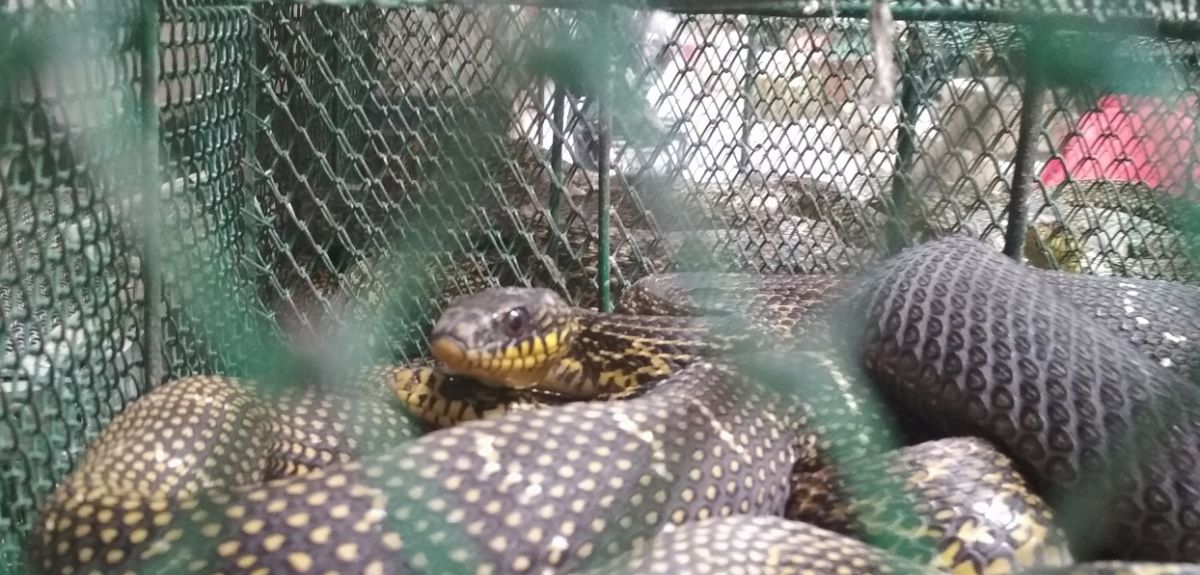
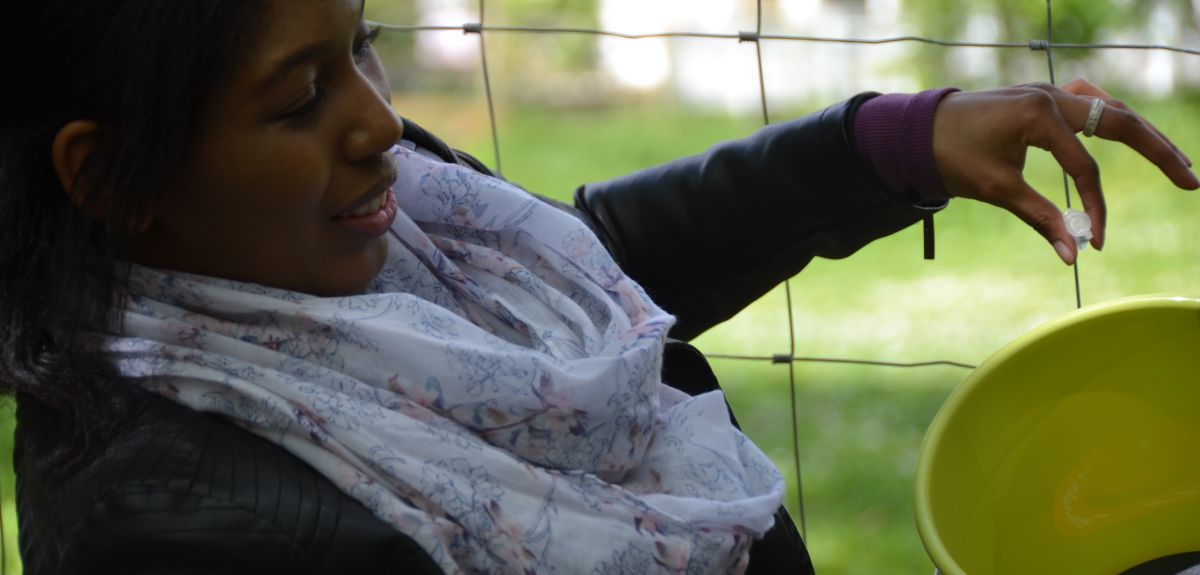
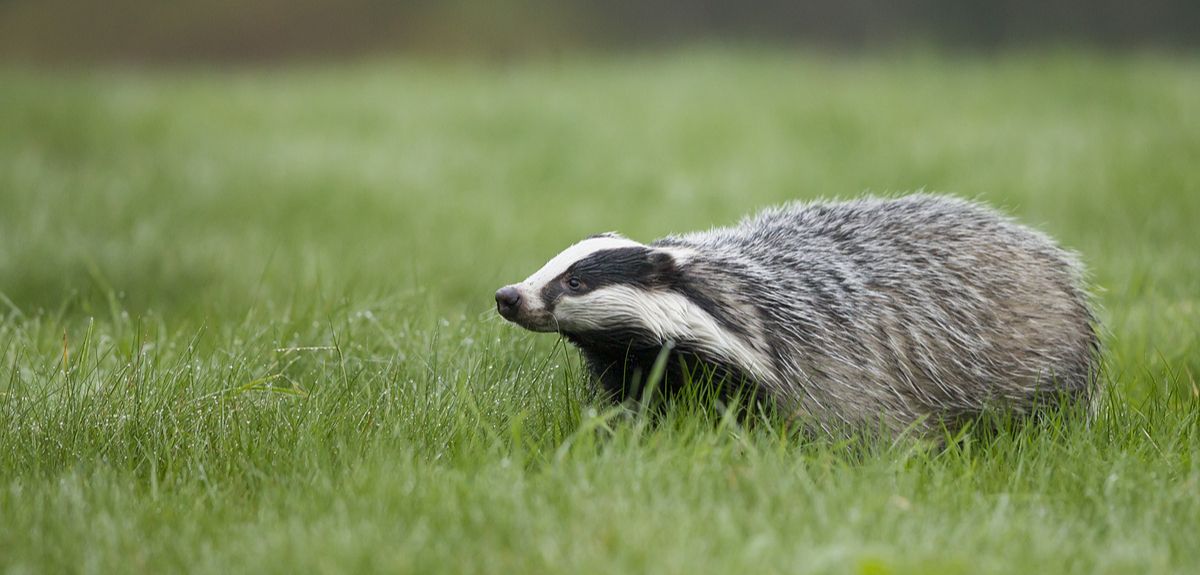

 World Malaria Day 2024: an interview with Professor Philippe Guerin
World Malaria Day 2024: an interview with Professor Philippe Guerin From health policies to clinical practice, research on mental and brain health influences many areas of public life
From health policies to clinical practice, research on mental and brain health influences many areas of public life From research to action: How the Young Lives project is helping to protect girls from child marriage
From research to action: How the Young Lives project is helping to protect girls from child marriage  Can we truly align AI with human values? - Q&A with Brian Christian
Can we truly align AI with human values? - Q&A with Brian Christian  Entering the quantum era
Entering the quantum era Can AI be a force for inclusion?
Can AI be a force for inclusion? AI, automation in the home and its impact on women
AI, automation in the home and its impact on women Inside an Oxford tutorial at the Museum of Natural History
Inside an Oxford tutorial at the Museum of Natural History  Oxford spinout Brainomix is revolutionising stroke care through AI
Oxford spinout Brainomix is revolutionising stroke care through AI Oxford’s first Astrophoria Foundation Year students share their experiences
Oxford’s first Astrophoria Foundation Year students share their experiences